Abstract
A study has been made of the pharmacology of the 5-hydroxytryptamine (5-HT)-induced depolarization responses that can be recorded extracellularly from the rat isolated cervical vagus nerve. Phenylbiguanide (PBG) and 2-methyl-5-hydroxytryptamine (2-methyl-5-HT) were found to mimic the effects of 5-HT on the vagus nerve. Their EC50 values were respectively 2.0 fold and 3.9 fold greater than that of 5-HT. Metoclopramide behaved as a reversible competitive antagonist of depolarization induced by PBG and 2-methyl-5-HT, with pKB values of 6.48 +/- 0.04, respectively. These agreed well with the pKB value of 6.60 +/- 0.04 obtained previously for metoclopramide against 5-HT on the rat vagus nerve. 5-HT, PBG and 2-methyl-5-HT had no demonstrable agonist effects at non-5-HT receptors on the rat vagus nerve. Tropacaine and m-chlorophenylpiperazine were found to behave as reversible competitive antagonists of 5-HT-induced depolarization of the vagus nerve. The pKB values were 6.29 +/- 0.03 and 6.90 +/- 0.03, respectively. Quipazine, MDL 72222 and ICS 205-930 were also shown to be effective antagonists of 5-HT on the vagus nerve. However, although these compounds were highly potent, they all caused a marked concentration-dependent reduction in the amplitude of the maximum response to 5-HT. This behaviour was not consistent with a simple reversible competitive mechanism. The results are discussed with reference to the current classification of mammalian peripheral neuronal 5-HT receptors.
Full text
PDF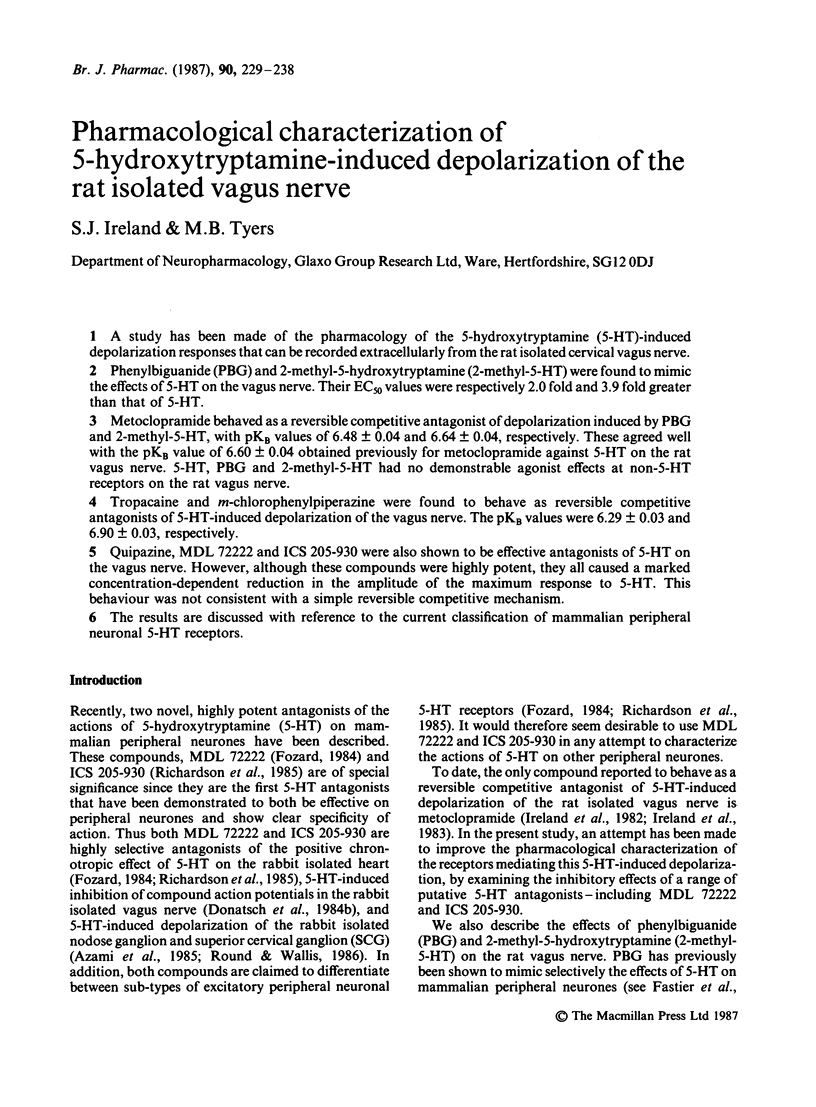
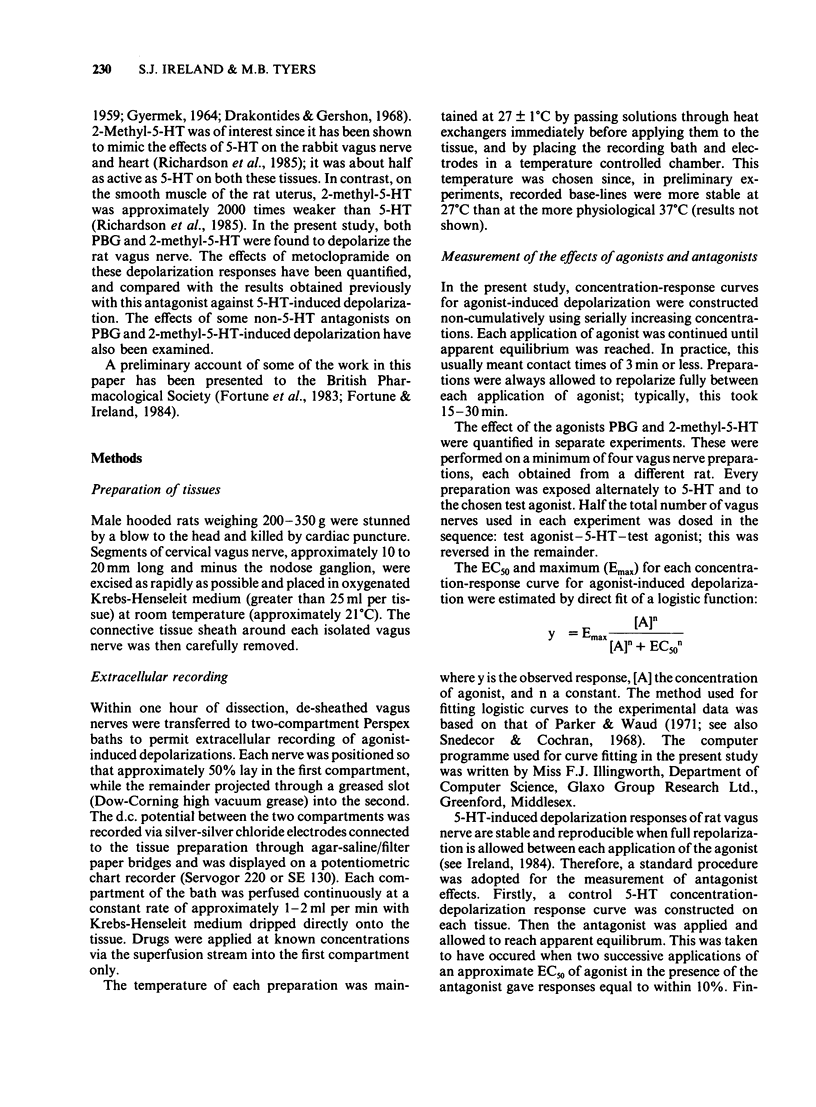
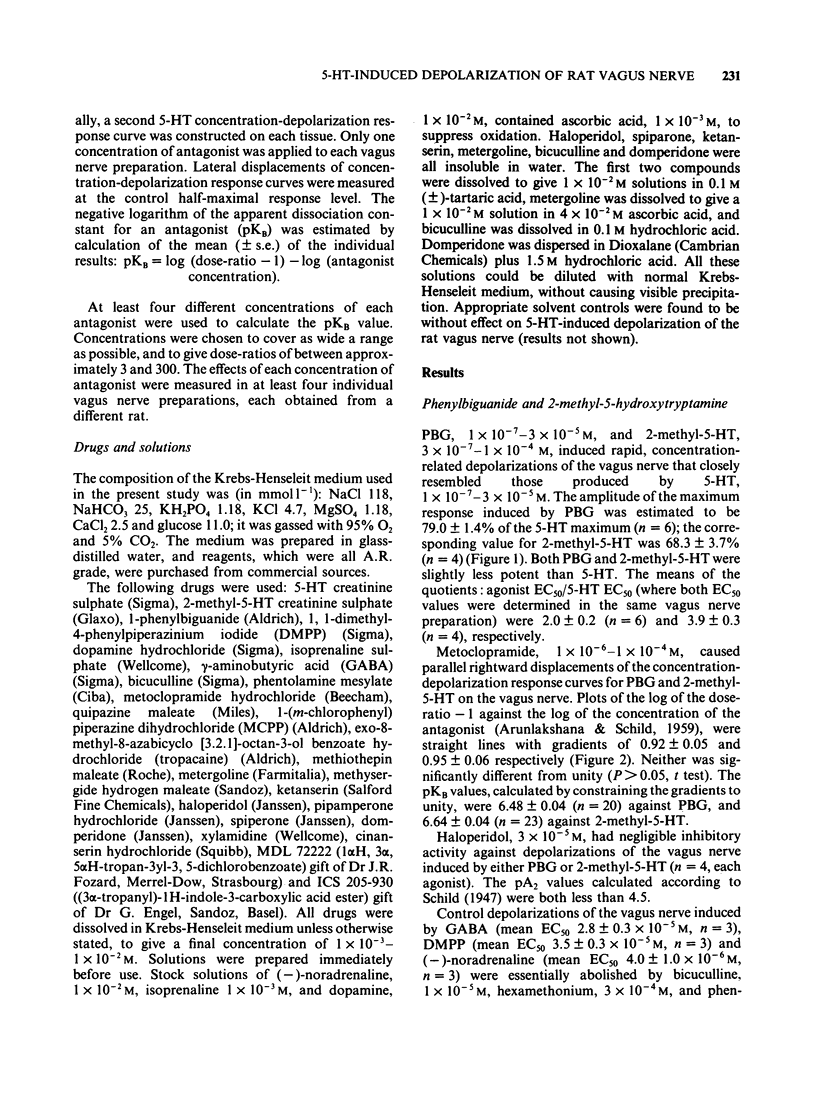
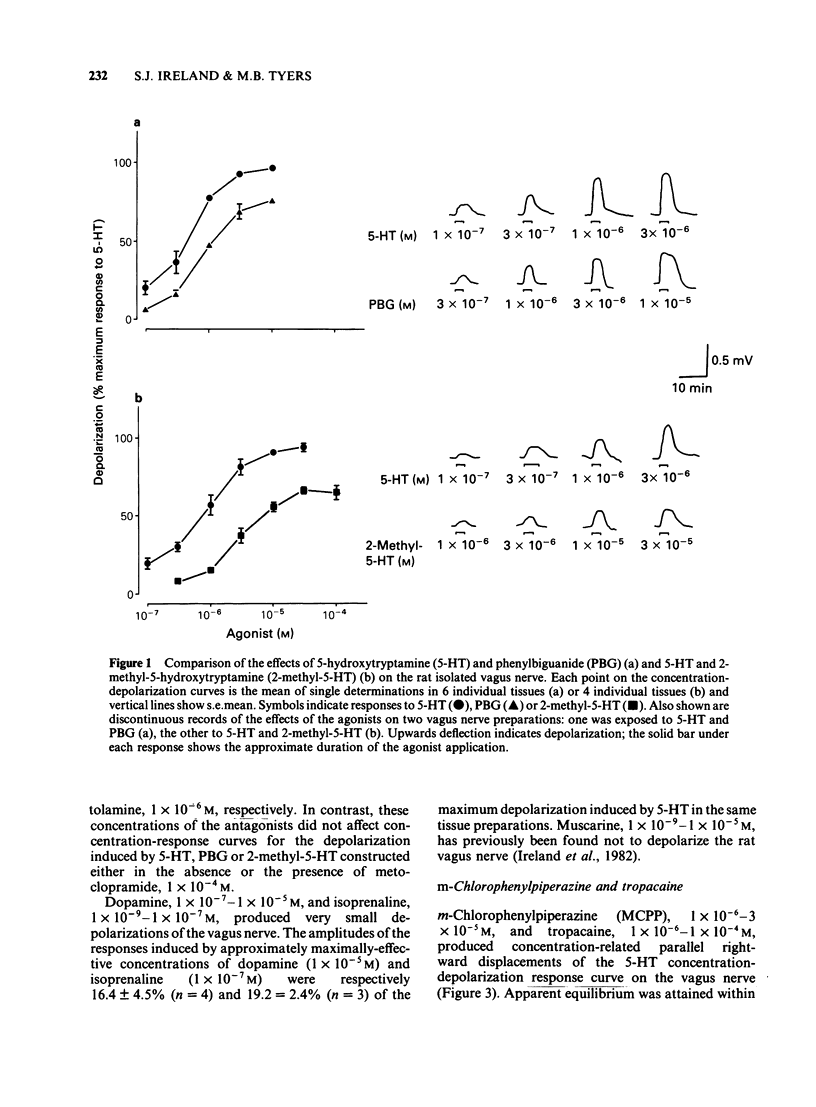
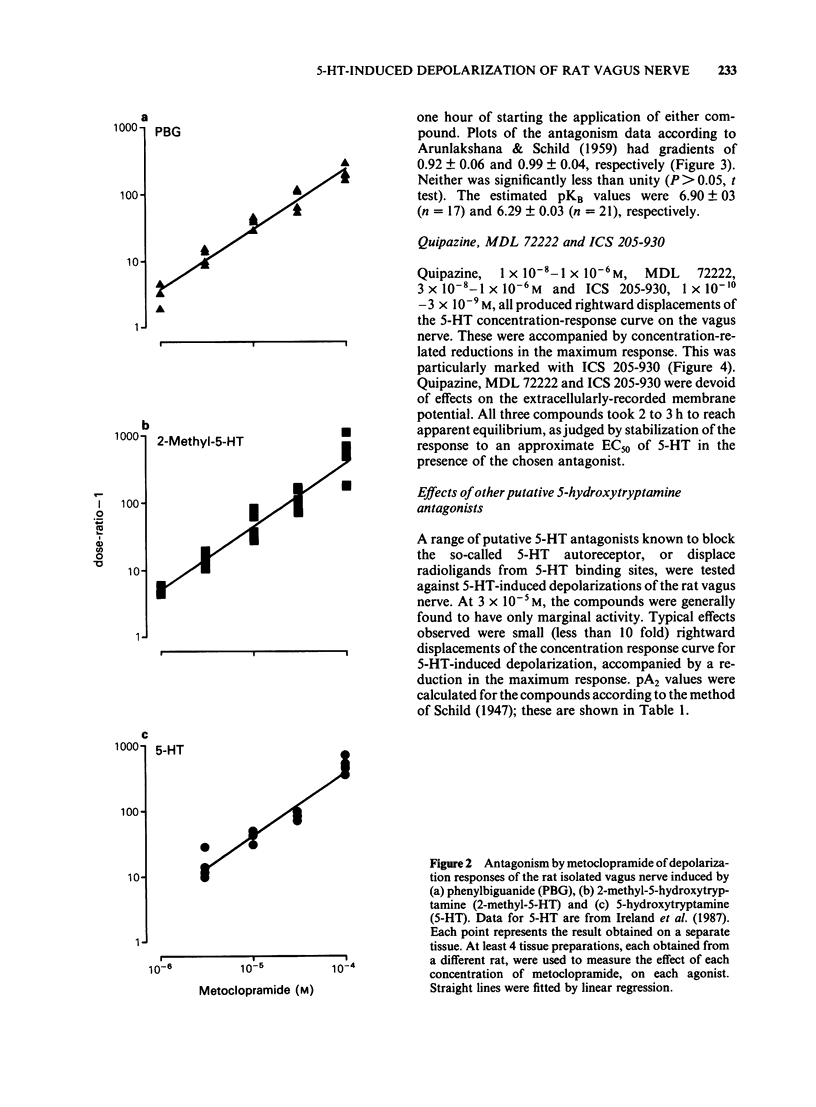
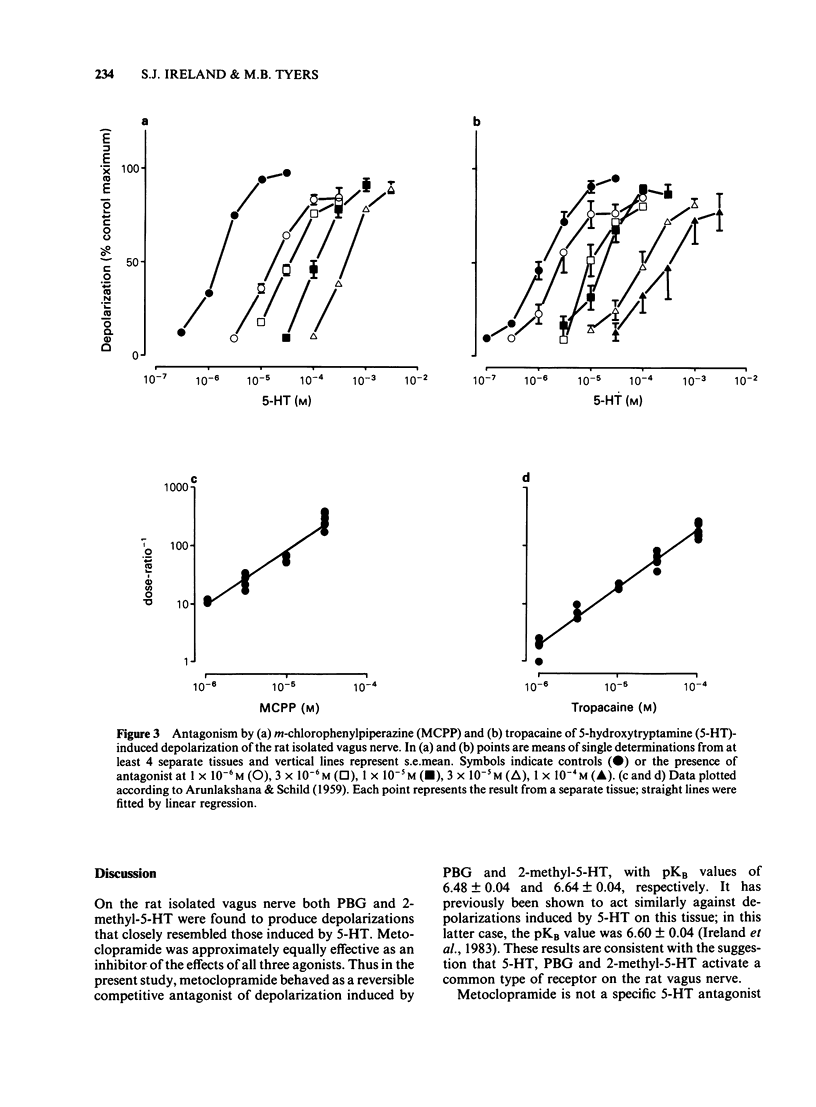
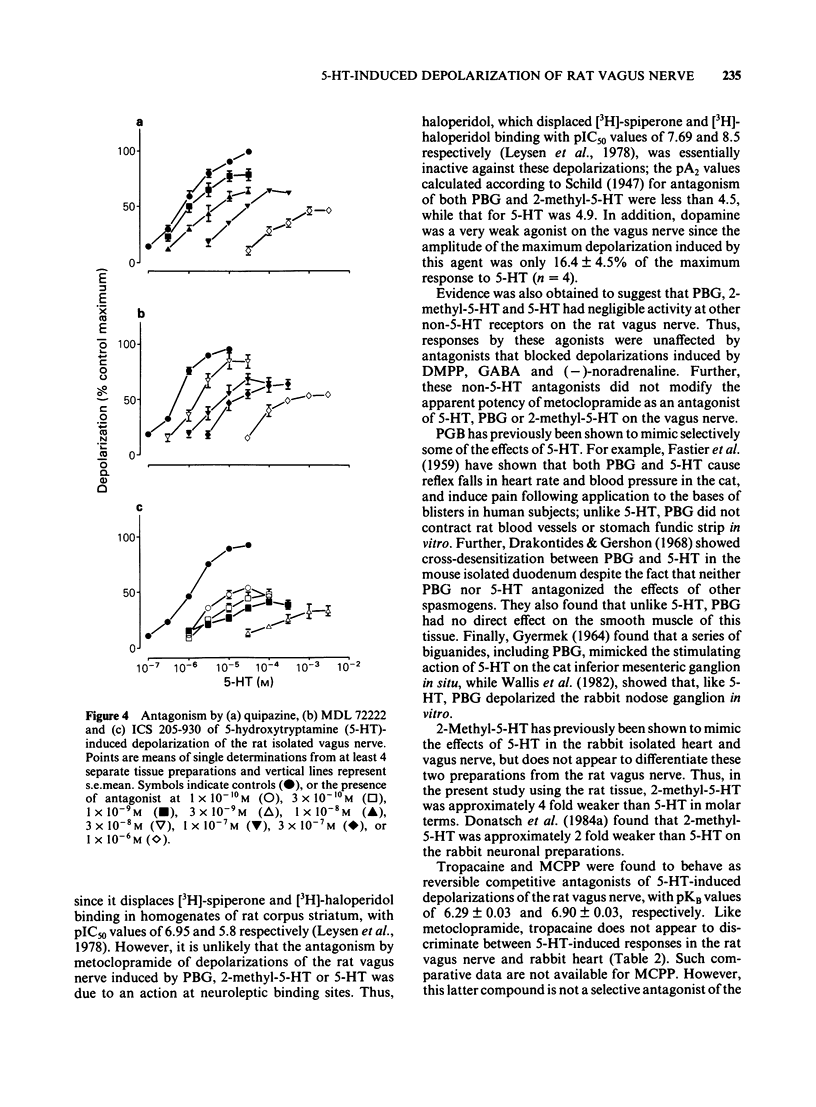
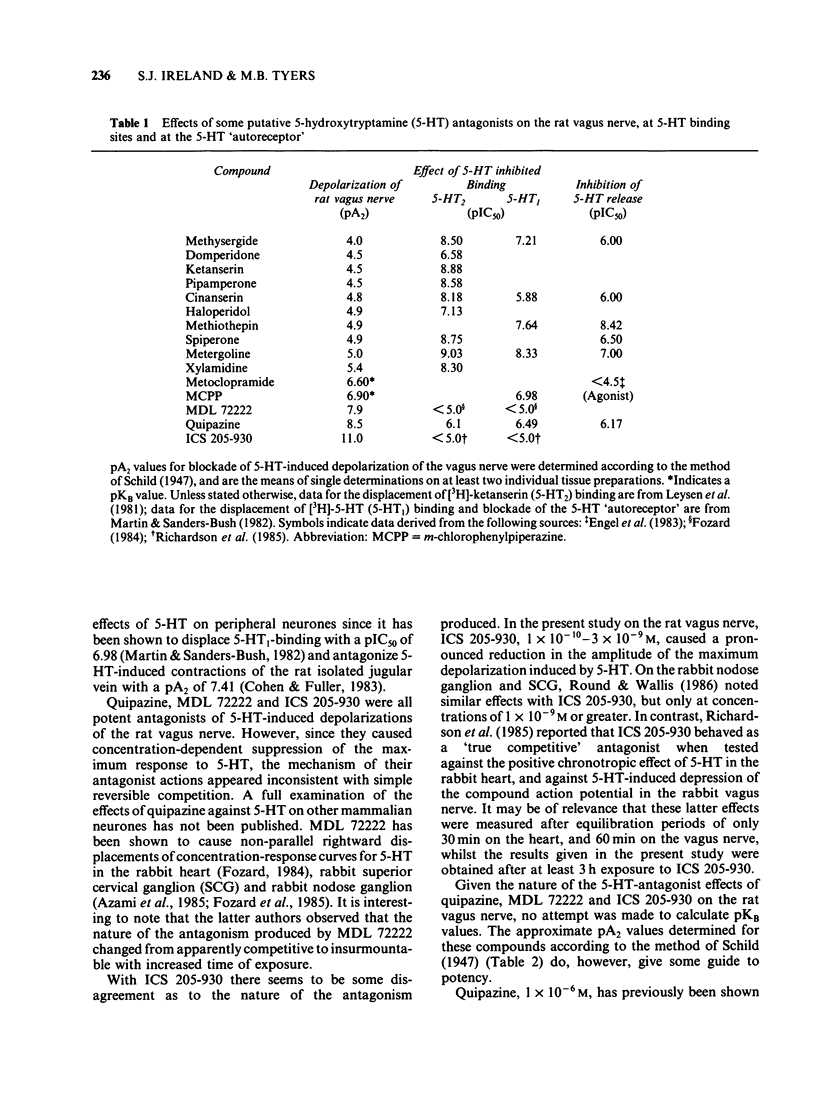
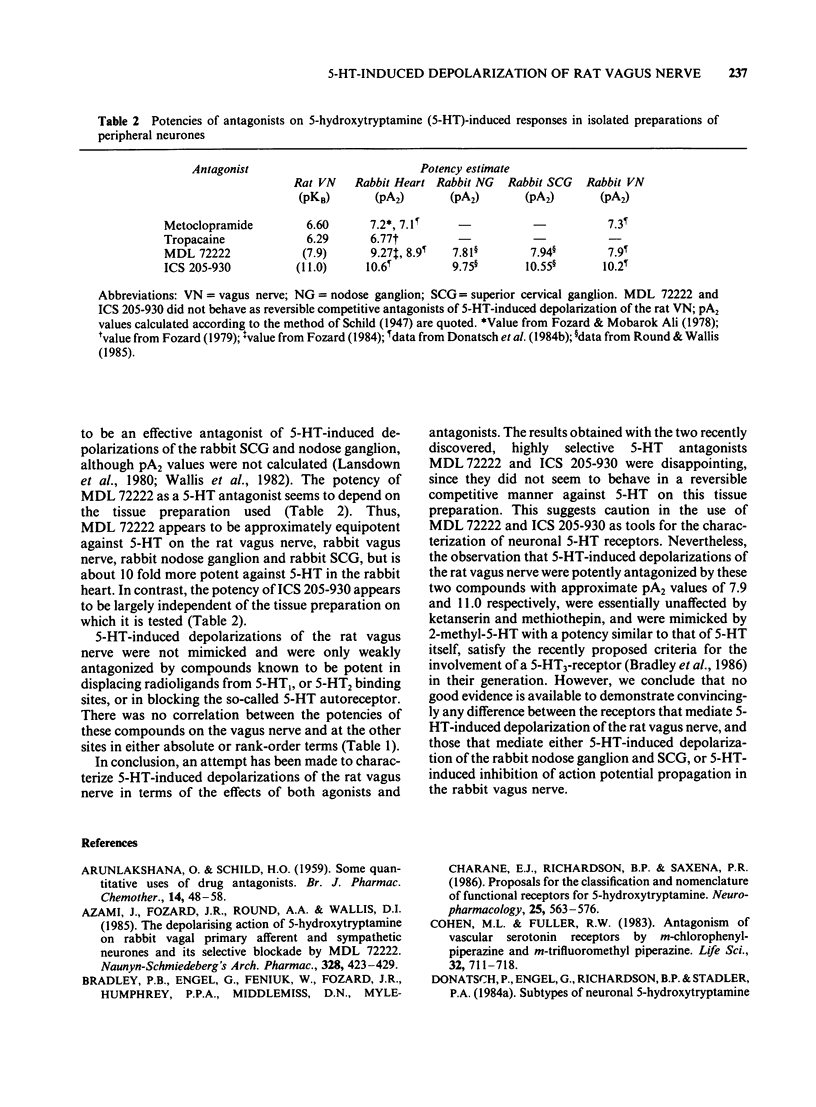
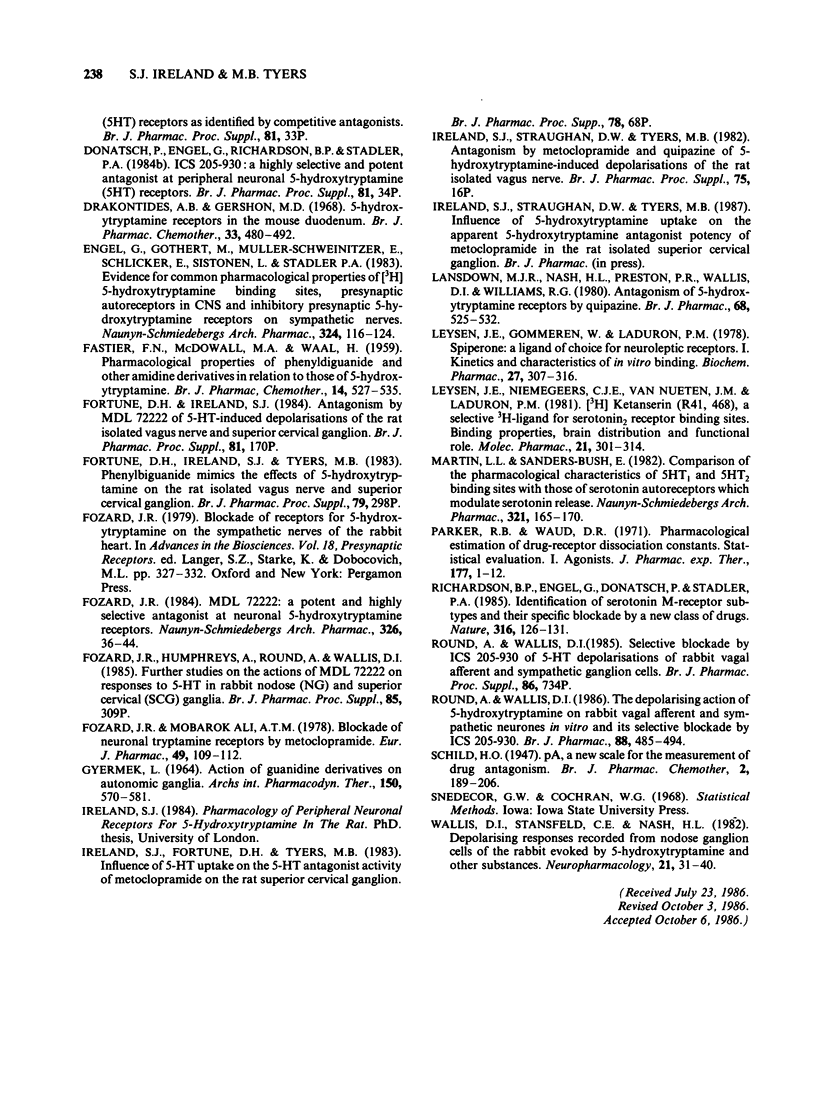
Selected References
These references are in PubMed. This may not be the complete list of references from this article.
- ARUNLAKSHANA O., SCHILD H. O. Some quantitative uses of drug antagonists. Br J Pharmacol Chemother. 1959 Mar;14(1):48–58. doi: 10.1111/j.1476-5381.1959.tb00928.x. [DOI] [PMC free article] [PubMed] [Google Scholar]
- Azami J., Fozard J. R., Round A. A., Wallis D. I. The depolarizing action of 5-hydroxytryptamine on rabbit vagal primary afferent and sympathetic neurones and its selective blockade by MDL 72222. Naunyn Schmiedebergs Arch Pharmacol. 1985 Feb;328(4):423–429. doi: 10.1007/BF00692911. [DOI] [PubMed] [Google Scholar]
- Bradley P. B., Engel G., Feniuk W., Fozard J. R., Humphrey P. P., Middlemiss D. N., Mylecharane E. J., Richardson B. P., Saxena P. R. Proposals for the classification and nomenclature of functional receptors for 5-hydroxytryptamine. Neuropharmacology. 1986 Jun;25(6):563–576. doi: 10.1016/0028-3908(86)90207-8. [DOI] [PubMed] [Google Scholar]
- Cohen M. L., Fuller R. W. Antagonism of vascular serotonin receptors by m-chlorophenylpiperazine and m-trifluoromethylphenylpiperazine. Life Sci. 1983 Feb 14;32(7):711–718. doi: 10.1016/0024-3205(83)90303-x. [DOI] [PubMed] [Google Scholar]
- Drakontides A. B., Gershon M. D. 5-hydroxytryptamine receptors in the mouse duodenum. Br J Pharmacol Chemother. 1968 Jul;33(3):480–492. doi: 10.1111/j.1476-5381.1968.tb00496.x. [DOI] [PMC free article] [PubMed] [Google Scholar]
- Engel G., Göthert M., Müller-Schweinitzer E., Schlicker E., Sistonen L., Stadler P. A. Evidence for common pharmacological properties of [3H]5-hydroxytryptamine binding sites, presynaptic 5-hydroxytryptamine autoreceptors in CNS and inhibitory presynaptic 5-hydroxytryptamine receptors on sympathetic nerves. Naunyn Schmiedebergs Arch Pharmacol. 1983 Sep;324(2):116–124. doi: 10.1007/BF00497016. [DOI] [PubMed] [Google Scholar]
- FASTIER F. N., McDOWALL M. A., WAAL H. Pharmacological properties of phenyldiguanide and other amidine derivatives in relation to those of 5-hydroxytryptamine. Br J Pharmacol Chemother. 1959 Dec;14:527–535. doi: 10.1111/j.1476-5381.1959.tb00960.x. [DOI] [PMC free article] [PubMed] [Google Scholar]
- Fozard J. R. MDL 72222: a potent and highly selective antagonist at neuronal 5-hydroxytryptamine receptors. Naunyn Schmiedebergs Arch Pharmacol. 1984 May;326(1):36–44. doi: 10.1007/BF00518776. [DOI] [PubMed] [Google Scholar]
- Fozard J. R., Mobarok ALI A. T. Blockade of neuronal tryptamine receptors by metoclopramide. Eur J Pharmacol. 1978 May 1;49(1):109–112. doi: 10.1016/0014-2999(78)90228-5. [DOI] [PubMed] [Google Scholar]
- GYERMEK L. ACTION OF GUANIDINE DERIVATIVES ON AUTONOMIC GANGLIA. Arch Int Pharmacodyn Ther. 1964 Aug 1;150:570–581. [PubMed] [Google Scholar]
- Lansdown M. J., Nash H. L., Preston P. R., Wallis D. I., Williams R. G. Antagonism of 5-hydroxytryptamine receptors by quipazine. Br J Pharmacol. 1980 Mar;68(3):525–532. doi: 10.1111/j.1476-5381.1980.tb14568.x. [DOI] [PMC free article] [PubMed] [Google Scholar]
- Leysen J. E., Gommeren W., Laduron P. M. Spiperone: a ligand of choice for neuroleptic receptors. 1. Kinetics and characteristics of in vitro binding. Biochem Pharmacol. 1978 Feb 1;27(3):307–316. doi: 10.1016/0006-2952(78)90233-2. [DOI] [PubMed] [Google Scholar]
- Leysen J. E., Niemegeers C. J., Van Nueten J. M., Laduron P. M. [3H]Ketanserin (R 41 468), a selective 3H-ligand for serotonin2 receptor binding sites. Binding properties, brain distribution, and functional role. Mol Pharmacol. 1982 Mar;21(2):301–314. [PubMed] [Google Scholar]
- Martin L. L., Sanders-Bush E. Comparison of the pharmacological characteristics of 5 HT1 and 5 HT2 binding sites with those of serotonin autoreceptors which modulate serotonin release. Naunyn Schmiedebergs Arch Pharmacol. 1982 Dec;321(3):165–170. doi: 10.1007/BF00505480. [DOI] [PubMed] [Google Scholar]
- Parker R. B., Waud D. R. Pharmacological estimation of drug-receptor dissociation constants. Statistical evaluation. I. Agonists. J Pharmacol Exp Ther. 1971 Apr;177(1):1–12. [PubMed] [Google Scholar]
- Richardson B. P., Engel G., Donatsch P., Stadler P. A. Identification of serotonin M-receptor subtypes and their specific blockade by a new class of drugs. Nature. 1985 Jul 11;316(6024):126–131. doi: 10.1038/316126a0. [DOI] [PubMed] [Google Scholar]
- Round A., Wallis D. I. The depolarizing action of 5-hydroxytryptamine on rabbit vagal afferent and sympathetic neurones in vitro and its selective blockade by ICS 205-930. Br J Pharmacol. 1986 Jun;88(2):485–494. doi: 10.1111/j.1476-5381.1986.tb10227.x. [DOI] [PMC free article] [PubMed] [Google Scholar]
- Wallis D. I., Stansfeld C. E., Nash H. L. Depolarizing responses recorded from nodose ganglion cells of the rabbit evoked by 5-hydroxytryptamine and other substances. Neuropharmacology. 1982 Jan;21(1):31–40. doi: 10.1016/0028-3908(82)90207-6. [DOI] [PubMed] [Google Scholar]


